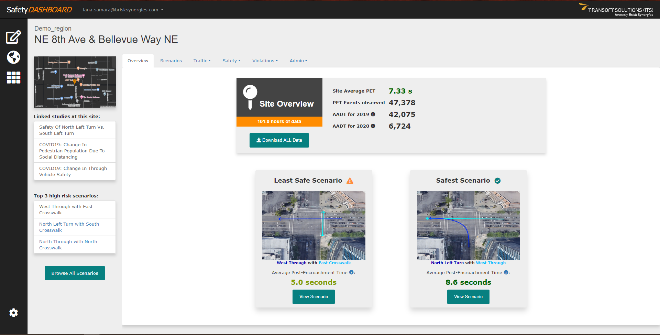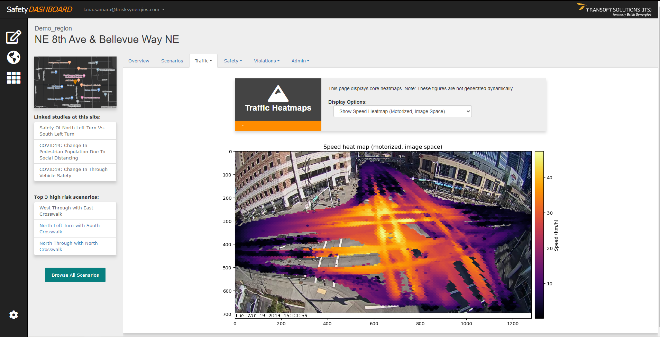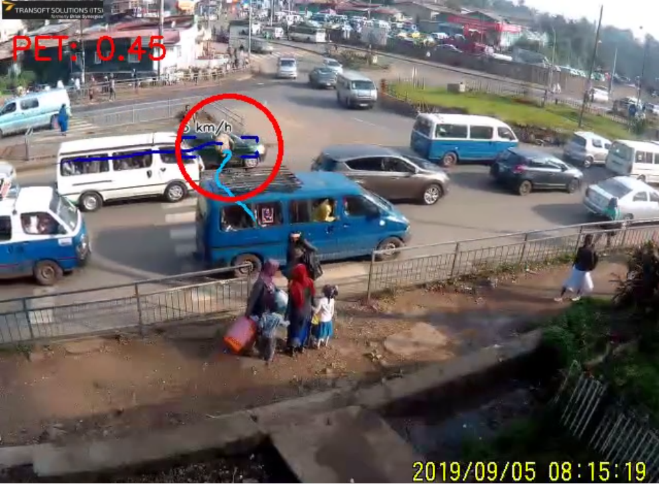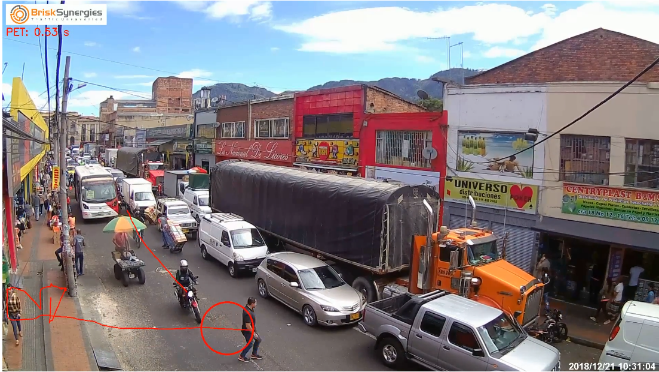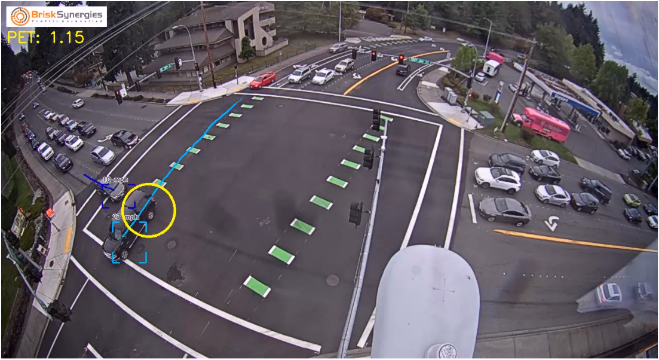
Author: Lana Samara, B.Eng.
Senior Product Manager
Making the decision to use video analytics to diagnose safety issues and deciding who to partner up with are both big decisions. There are many factors to consider: Why is this safety study required? What specific features and outputs will I benefit from? Whose technology has been tested and proven to be the most reliable? What is the budget and timeline?
The first step is determining how much is known about the specific road safety problem and how to go about the diagnosis. Assuming the exact problem and solution are not known prior, the diagnostics and outputs required should be determined. In cases where there is a clear understanding of the problem, for example red-light running, the required metrics can be easily determined – in this case, only counts might be required.
However, if more help is required to diagnose the problem, a combination of metrics can be obtained, such as turning movement counts, speeds, near-misses, violations, que lengths, road user classification, etc. Another item to consider is the scalability of the deployment and diagnosis. Is this an isolated problem that is observed at a few targeted locations or is it widespread? If it is widespread, is it possible to extrapolate the results obtained to multiple locations or would multiple deployments be required? It is also important to determine whether the problem requires continuous monitoring or if a one-time analysis is enough to determine and evaluate the treatment(s). These are all discussions you should have with the video analytics firm.
Now that you have determined your safety study will benefit from video analytics, the next question is: How to select a technology provider to partner with? Assuming all the above requirements are fulfilled, you’ll of course want to go with someone you trust – an established company with dedicated and experienced staff to guide you through your first, and all subsequent deployments. Every new technology provider must learn to crawl before they can walk. A company that has deployed globally in several different traffic settings and analyzed a wide assortment of safety challenges using many types of cameras, has the benefit of applying those lessons learned to your deployment. This is important, since driver behaviours, traffic laws, road conditions, and city regulations can change over time and from location to location. Providers who have had the chance to learn from their mistakes have the foresight to see and manage future challenges specific to your study conditions and requirements.
The final question to ask yourself is: How much time and money is available? If you are just after traffic counts, there are many low-cost options available, as this technology has been around for over a decade. But if you’re after metrics that are going to determine how your roadway should be designed and/or how pedestrians and drivers interact in a space, you’ll need granular safety metrics. If you have three to five years to wait and lots of data to pull from, then maybe collision data will suffice. If time, data, and analyst resources are constrained, then automated video analytics might be worth considering. Will your study benefit from continuous real-time monitoring using existing camera infrastructure over a year, or will 30 hours of video from one busy intersection suffice? Do you need to compare a cross section of sites, or can the results from one intersection be extrapolated to address challenges across a network? Do you need a diagnosis of the problems that exist at one moment in time, or would it be beneficial to contrast outputs during two or more time periods? To get the most value out of a deployment, it is important to gain a clear understanding of the issue at hand and to have alignment with the video analytics firm on what needs to be studied, diagnosed and/or measured, so that you have access to the best results.
